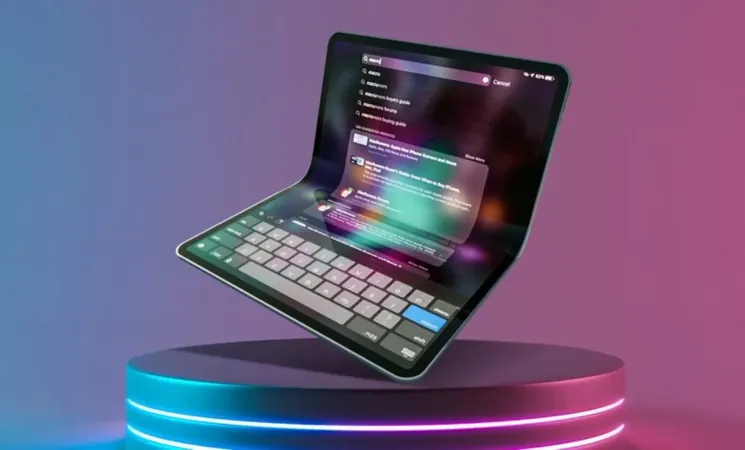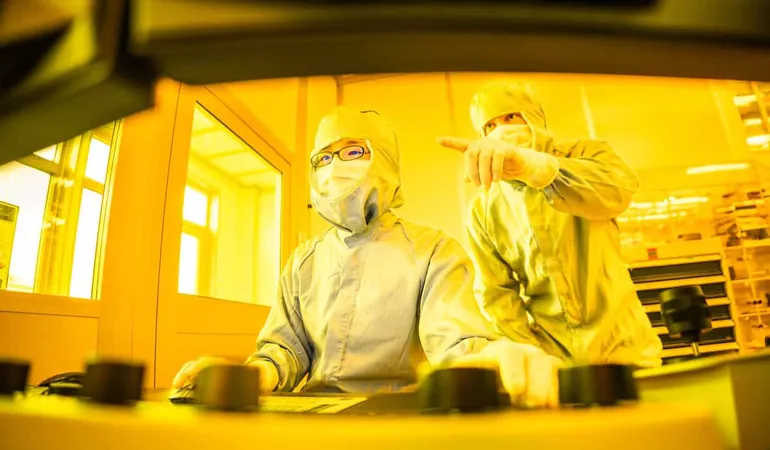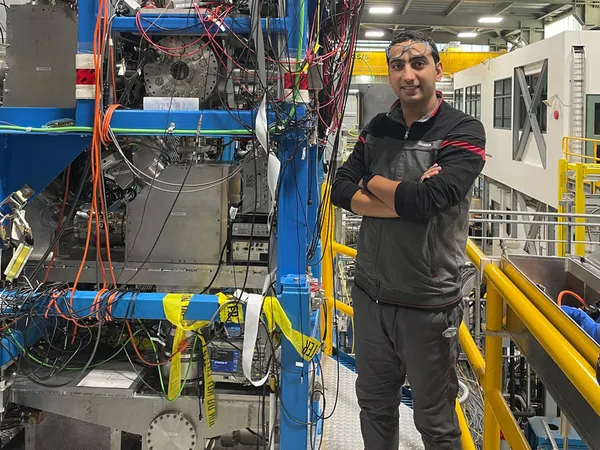
Revolutionary Trash Compactor Set for ISS: A Game-Changer for Space Exploration!
2024-11-09
Author: Wei
Introduction
As astronauts aboard the International Space Station (ISS) face the daunting challenge of managing waste generated during their missions, a groundbreaking solution is on the horizon. Sierra Space has secured a contract to create a state-of-the-art trash compactor designed specifically for the demands of space travel. This innovative device promises to reduce waste volume by an impressive 75%, while also enabling the reclamation of water and other gases—vital for long-duration missions to the Moon and Mars.
The Trash Compaction and Processing System (TCPS)
The cutting-edge system, known as the Trash Compaction and Processing System (TCPS), is slated for testing aboard the ISS in late 2026. The device addresses a significant gap in current waste management protocols by compacting trash into manageable blocks that can be easily stored. In a bold twist, these trash blocks could even serve an additional purpose as radiation shielding during extended space missions—a potential lifesaver for future astronauts venturing deep into space.
Quotes from Experts
Tom Vice, CEO of Sierra Space, underscores the importance of this technology: “Long-term space travel requires the efficient use of every ounce of material. Waste management isn’t just a logistical concern; it’s a matter of survival and mission integrity in the vacuum of space." His emphasis on sustainability highlights a growing awareness within the space community regarding environmental stewardship beyond Earth.
Current Trash Management on the ISS
Currently, trash aboard the ISS—ranging from food packaging to used clothing—is sorted and temporarily stored in separate waste bags. Once filled, these bags are transported back to Earth by resupply vehicles, like the Russian Progress and Northrop Grumman's Cygnus, which burn up upon re-entry, taking all the trash with them. But as human endeavors venture beyond low Earth orbit to places like the Moon and Mars, these disposal methods will no longer suffice. The TCPS aims to revolutionize waste handling, allowing for more sustainable practices that do not involve simply jettisoning trash into space—a method fraught with its own environmental challenges.
Water Reclamation and Resource Efficiency
Moreover, the TCPS will enhance waste management efficiency by reclaiming nearly all the water from "wet" waste, which currently poses a significant challenge in storage and disposal. This feature will not only help conserve precious resources but also ensure that astronauts have access to clean water during their missions.
Technical Overview of TCPS
Designed for ease of use, the TCPS operates independently, requiring only power, data connectivity, and air-cooling interfaces. It incorporates an innovative Catalytic Oxidizer (CatOx) to process volatile organic compounds (VOCs) and other gases, maintaining a safe and sterile environment within the spacecraft. Through heat and pressure, the trash is transformed into solid square tiles, compressing down to less than one-eighth of the original volume. These lightweight, safe-to-handle tiles offer additional protection against radiation—a critical consideration for life in space.
Future Prospects
Sierra Space's journey began with a contract award in 2023, and following the completion of initial designs by January 2024, they are now in the final stages of developing a Flight Unit for in-orbit testing. This could pave the way for a new era of sustainable and efficient waste management in space, enhancing the safety and sustainability of future crewed missions.
Conclusion
Stay tuned, as we watch this exciting development unfold. The ability to manage waste effectively in orbit might just be the key to humanity’s deeper explorations into the cosmos!



 Brasil (PT)
Brasil (PT)
 Canada (EN)
Canada (EN)
 Chile (ES)
Chile (ES)
 Česko (CS)
Česko (CS)
 대한민국 (KO)
대한민국 (KO)
 España (ES)
España (ES)
 France (FR)
France (FR)
 Hong Kong (EN)
Hong Kong (EN)
 Italia (IT)
Italia (IT)
 日本 (JA)
日本 (JA)
 Magyarország (HU)
Magyarország (HU)
 Norge (NO)
Norge (NO)
 Polska (PL)
Polska (PL)
 Schweiz (DE)
Schweiz (DE)
 Singapore (EN)
Singapore (EN)
 Sverige (SV)
Sverige (SV)
 Suomi (FI)
Suomi (FI)
 Türkiye (TR)
Türkiye (TR)
 الإمارات العربية المتحدة (AR)
الإمارات العربية المتحدة (AR)